When looking at a German Shepherd, few people would think that it was bred to lead and protect a flock. Most people see the German Shepherd as a police or rescue dog, a guide dog, a friend to children and a faithful companion.
Although the origins of this breed were linked to herding, it has proven to be a versatile and intelligent dog . Today he continues to carry out this type of activity, but he is also chosen and trained to help man in various tasks such as those indicated above.
Characteristics:
- Big size
- Weight : Between 22 and 40kg.
- Hair type : Thick
- Character : Sociable, affectionate, intelligent.
- Health : Prone to developing hereditary diseases
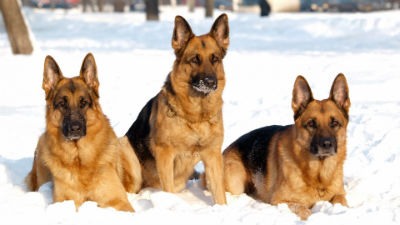
History and origin of the German Shepherd dog
Around 1880 different breeds of sheepdogs lived in various regions of Germany. At that time, attempts were made to standardize different grazing breeds. The dogs were bred to preserve the traits that stood out in their work herding sheep and protecting them from predators. In Germany, this was practiced in local communities, where shepherds selected and bred dogs that had the skills necessary to herd sheep; such as intelligence, strength, speed and keen senses of smell. The results were dogs that could perform such tasks, but that differed significantly from one location to another, both in capabilities and appearance.
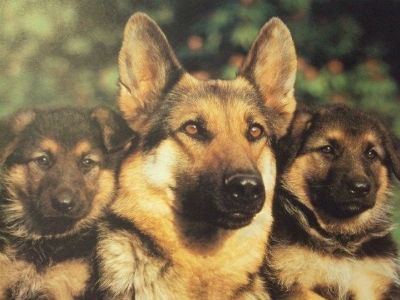
To unify these differences, the Phylax Society was founded in 1891 , with the intention of creating standardized dog breeds. The society dissolved only three years later due to conflicts regarding the traits that the dogs promoted by the society should have. Some members believed that dogs should be bred solely for work purposes, while others believed that dogs should also be bred for appearance. Although they failed in their goal, the Phylax Society had inspired the standardization of dog breeds uniformly.
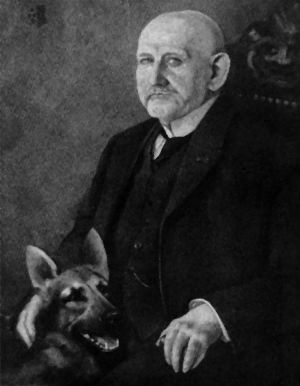
Max von Stephanitz , a former cavalry captain in the German army and former student of the Berlin Veterinary College , was one of the members of the Phylax Society. He firmly believed that dogs should be bred to work. In 1899 , Von Stephanitz was attending a dog show when he was shown a dog named “Hektor Linksrhein.” Hektor was originally from a few generations of selective breeding and completely fulfilled what Von Stephanitz believed a working dog should be. He was excited by the dog's strength and captivated by the animal's intelligence, loyalty and beauty. So much so, that he bought it immediately. He later changed his name to “Horand Von Grafrath” and founded the “ Verein für Deutsche Schäferhunde” ( Society for the German Shepherd ) in 1899 . Horand was declared the first German Shepherd breed dog and added to the society's breed registry.
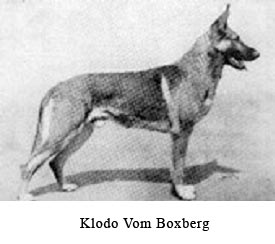
Horand became the focus of breeding programs and was bred with dogs belonging to other members of the society that displayed similar traits. Although he sired numerous offspring, Horand's most successful pup was “Hektor von Schwaben.” Hektor was inbred with another of Horand's offspring, from which “Beowulf” was born, who later sired a total of eighty-four cubs, primarily through Hektor's other offspring. Beowulf's progeny were also inbred and it is from these puppies that all German Shepherds draw the same genetic link. It is believed that the society achieved its goal thanks to Von Stephanitz's firm and uncompromising leadership. For all these reasons, he is considered the creator of the German Shepherd dog breed .
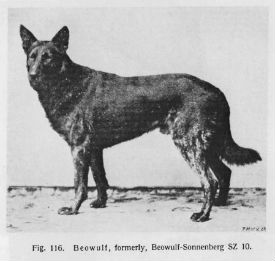
Physical characteristics of the German Shepherd dog
Beauty , affable character and intelligence are the characteristics that led the German Shepherd to be one of the most famous dogs of all time . The head of this dog is wide and wedge-shaped. The ears on top are medium-sized, erect and pointed, making it look like a wolf. Dark eyes, in an oblique position, convey security and confidence. The powerful teeth must be strong, healthy and complete with all 42 teeth to guarantee the power of this dog's scissor bite.
You may be interested in: The Belgian Shepherd
The German Shepherd's body is longer than it is tall, the top line is slanted downward, so the withers are higher than the rump. The chest, slightly wide, has a depth ranging between 45 and 48% of the height at the withers and the sternum is long and clearly visible.

The tail is long and reaches the hook when at rest, but should not exceed the middle of the metatarsus. When at rest, the German Shepherd has its tail hanging down, while it keeps it elevated when active, even if it never rises above the horizontal line. The coat has been the subject of controversy because there are three varieties. However, the official breed standard provides for breeding of the longhaired and shorthaired variety, both with undercoats. In the case of short hair, it is thick and adherent to the body and can be thicker and longer on the neck. For the long hair variant, it is thick but unlike the other variant, it is not grippy. However, the hair is expected to be longer and thicker on the neck than in the short-haired variant. The breed standard supports several colors, including solid black, black with reddish undertones, and various shades of gray. The nose must be black. The height at the withers varies from 60 to 65 centimeters for males and from 55 to 60 centimeters for females. The weight of the males ranges between 30 and 40 kilos , while that of the females ranges between 22 and 32 kilos .
Different lines of the German Shepherd dog
The versatility of the breed allows there to be different lines aimed at different tasks, functions and purposes. Lines that have their own features, origins and history. Let's see what these lines of German sheepdogs are.
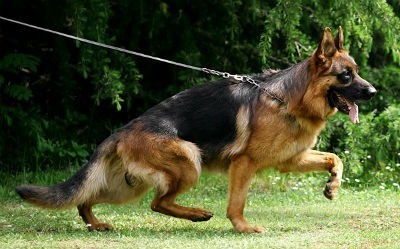
- West German Demonstration Line : This is the original Max Von Stephanitz standard and the most uniform, recognizable and popular type.
- American and Canadian demonstration line : With a firm structure and lateral gait, this line is characteristic of the demonstrations of the national German Shepherd clubs of North America since the 1970s.
- West German Line of Work : Also considered the original type created by Max Von Stephanitz, these Shepherds excel at guard work, rescue, herding, and as an excellent family pet. All this is thanks to an effort to correct the capacity, impulses and work structure.
- East German line of work : Bred under the East German government after World War II, this line is characterized by rigid control of blood lees. They are dogs known for their temperament, soundness and excellent genetics.
- Czech line of work : Developed mainly for military and police work from communist Czechoslovakia, they are dogs very oriented towards defense and guarding.
Character and personality of the German Shepherd dog
The character and personality of the German Shepherd is stable, confident and proud. The courage of these dogs is known to everyone, as well as their defense instinct. Given this natural instinct, they are among the most sought after dogs for defense and protection. However, it should be noted that courage and defense are not synonymous with aggression and danger. The German Shepherd tends not to trust strangers, even if there are no imminent dangers, and above all, it never attacks without reason. Obviously, correct socialization when he is a puppy is essential to avoid problems in the future, because character does not depend only on genes. It is an easy breed to train with positive reinforcement, like many other dog breeds.
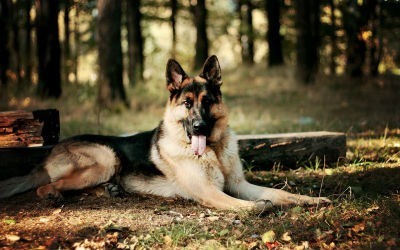
Thanks to its great capacity for adaptation, this breed has been successfully used in various activities. The German Shepherd excels in dog sports, as a search and rescue dog, as a guide dog, police dog or in pet therapy. And of course, he is exceptional as a companion dog. The puppy that will be part of the family must be educated with affection, but also firmly. These simple precautions are the best guarantee for a relationship of affection and friendship with an animal that asks nothing more than to put its notable qualities at the service of its owner. However, you must remember that he can be sweet and affectionate with children, but he is not always able to measure their strength. For this reason, it may not be the ideal playmate for the little ones in the house. To be truly happy, the German Shepherd needs the presence and affection of its owner. Although he looks like a pet, his working dog instinct makes him generally proactive. It will therefore be necessary to ensure that you always feel useful. You should not hesitate to spend several hours a day proposing physical activities that allow you to progress and fully realize yourself.
Pregnancy and puppies of the German Shepherd dog
The gestation period of a German Shepherd dog is approximately 2 months and 7 days, that is, 67 days. During this time, constant care from a veterinarian is essential. It is advisable, especially at birth, to have the veterinarian at your side, to be able to help in case of complications. The number of puppies can vary between 4 and 10 puppies per litter. If the shepherd bitch becomes a mother for the first time, one can count on a smaller number of puppies.
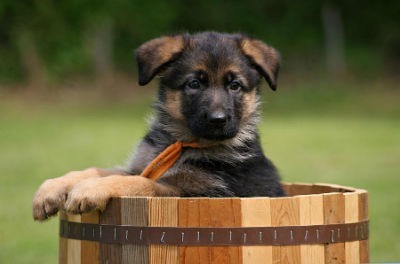
Two weeks before birth, the dog gets used to the whelping area. This should be well designed with blankets and soft paper, since the dog loses a lot of blood and amniotic fluid during childbirth. Starting one week before the scheduled date, the female's body temperature is measured daily. Approximately 24 hours before birth, the temperature drops to 2 degrees. The birth of a puppy consists of three phases; During the opening phase, strong contractions occur as the birth canal opens. In the abortion phase, the pup is expelled. This is followed by the placenta which the dog herself eats. It contains many nutrients and is released to the puppy through breast milk. Now comes the third and final phase of this wonder of nature. Since the puppy comes out in a small amniotic sac at birth, it is bitten by the bitch, and the pup is detached from the umbilical cord. The amniotic sac also eats it. These three phases are repeated every time a puppy is born. The time interval between the birth of 2 puppies can be from 15 minutes to 2 hours. Puppies come into the world blind and deaf. Only his sense of smell develops to find his mother's breasts. For the next 2 weeks his routine consists solely of eating and sleeping. After this time, their eyes open and their sense of hearing develops. After about 3 weeks they get their baby teeth and become more active. A month after their birth, they begin to explore the area and learn to interact with other pets, such as cats. From the second month the socialization phase begins. Here, puppies learn the basics of coexistence. During this time, it is important to familiarize puppies with all the things and sounds of everyday life. From the eighth to the twelfth week it is gradually withdrawn from breast milk. As the puppies are able to take solid foods and are no longer dependent on the mother, it is the ideal time to separate mother and puppies.
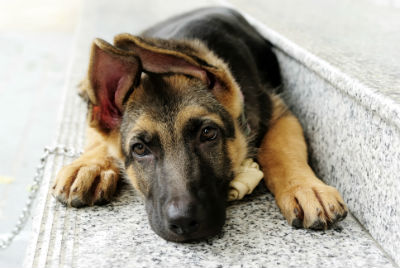
The new owner must ensure that the dogs have been vaccinated or dewormed. There must also be a veterinary certificate of health status. One of the most well-known typical breed diseases in German Shepherd dogs is hip dysplasia. It is a hereditary disease that leads to serious disorders of the hip joint and the posterior musculoskeletal system of the dog. When choosing the puppy, pay attention to whether it has a healthy self-esteem, is curious and shows good alertness. Additionally, puppies should have a healthy distrust of anything new. Anxious animals are not suitable for use as a service dog. Female dogs are generally quieter and more reserved. At the age of approximately 3 months , the puppies move to their new home. From here you start with the education and training of the dog. Contact with other dogs is very important to learn social behavior.
How to feed a German Shepherd dog
Adequate nutrition from the first months of life is crucial to ensure that your German Shepherd develops good health. When you acquire a puppy, it must eat alone and be completely weaned. The age of the puppy should never be less than 3 months.
You may be interested in reading: How to feed a puppy: tips and tricks
The first tip is to ask the breeder what food they used for weaning and possibly give us a sample, in order to provide our dog with a familiar food to avoid problems with the change. Especially during the growth phase it is important to provide a nutritious, adequate and well-balanced diet. The German Shepherd, like all dogs, is primarily carnivorous. Some foods that are necessary for us can harm you or, in the best of cases, do not create any type of nutritional principle. For this reason it is advisable to choose a good feed such as the entire Lobo Azul range, suitable for human consumption and based on top quality raw materials for 100% natural nutrition . The German Shepherd is a dog that, like many medium and large dogs, can be subject to certain diseases. With good nutrition you can reduce the risk of suffering from them and ensure optimal health for your pet.
German Shepherd Dog Care
The German Shepherd can get used to living in an apartment, but in this case he will need a lot of walks and exercise to strengthen his muscles. Having a garden helps, but it doesn't have to completely replace walks and play sessions outside the home. Allow him to practice a sport for dogs, as it helps him drain accumulated energy and stay in shape. Training is also useful in helping you develop your intelligence.
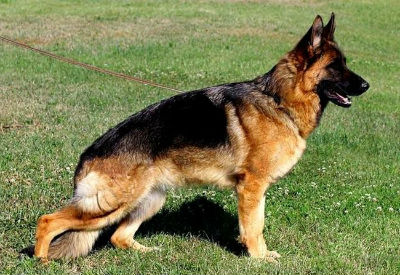
Taking care of the German Shepherd's coat is not very difficult because it does not need to be cut frequently. However, since he tends to shed a lot, brushing him every day is very important. You should not bathe him often to avoid damaging the natural protection of the coat.
You may be interested in: How diet influences your dog's hair
Health and diseases of the German Shepherd dog
Unfortunately, the great popularity of the breed has encouraged indiscriminate breeding for purely commercial purposes. Indiscriminate breeding has had a negative impact on the health of the breed. It is for this reason that the German Shepherd is prone to developing hereditary diseases such as hip dysplasia, elbow dysplasia, digestive problems, epilepsy, chronic eczema, keratitis (inflammation of the cornea) and dwarfism.
It is important to take the dog to the vet every 6 months and respect the vaccination schedule. The life expectancy of the German Shepherd is approximately 13 years .

Education and training of the German Shepherd dog
As the German Shepherd is an intelligent, careful and disciplined dog , its training does not present particular difficulties. However, if you are not an expert, it is good to consult a professional. German Shepherd training should begin around 7 or 8 months. To properly train a German Shepherd, 10 lessons are enough, during which, always accompanied by its owner, but under the orders of the trainer, the dog will learn the essential notions that will make it an educated companion. Behavior on a leash, foot calling, the habit of responding to one's own name and traditional, but no less necessary, commands.
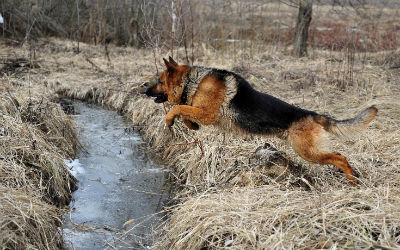
When the dog has correctly assimilated these first routines, the trainer will continue the perfecting process. First of all on the track, where the German Shepherd learns to jump, bark at a stranger, etc. Then in the field and in the forest (we must not forget that if the Belgian Shepherd is considered the sprinter on the track, the German Shepherd is more powerful in open spaces). Finally, you work in an urban area, where you will have to get used to the noise of cars, the coming and going of people, etc. In short, it will be inserted in all the environments in which it will have to develop and adapt. Then the defense exercises can begin where the trainer will instruct the dog to guard a house, a farm, defend children, etc.
All trainers agree on the same message, all training must be understood as a pleasure for the animal , otherwise the result may be opposite to the desired one. In 10 hours, the young German Shepherd will transform into a balanced and effective defense dog. In fact, a guard dog should never be an aggressive dog. Contrary to popular belief, aggression is not part of the nature of this breed. The trainers' mission is to teach you to deter any malicious person, not to attack them. Only after all this can the competition begin and take on its main tasks, from a long list of roles that it supports with great success (army, police, customs, disabled people, mountain and disaster rescue, etc.).
Conclusion and tips for acquiring a German Shepherd dog
Always try to find a serious and professional breeder , in order to guarantee healthy puppies with a health record and first vaccinations. You should also request a guarantee of a few months, in case the puppy develops hereditary health problems. Logically, the puppy will have to be at least 3 months old to be able to take it home.
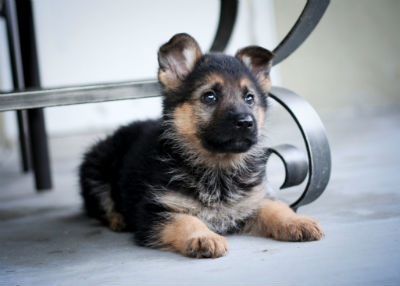
It is also preferable to be shown the parents, so you can get an idea of what they will be like as an adult. When it comes to choosing the right puppy from a litter, you need to choose wisely. However, choosing the right puppy is never an exact science and requires a little attention, so as not to risk the breeder making a totally random or self-serving decision. Most people tend to base their choice simply on the physical appearance of the puppy, rather than taking the time to learn about its individual characteristics . This can lead a person to make the wrong decision.
Videos about the German Shepherd
Other sheepdogs:












